|
Regional History History of Timbering County Histories Oral Histories Calhoun County Gulf County Jackson County Wakulla County Mary Butera Betty Green Homer Harvey Eloise Strickland Emmett Whaley |
Voices from Wakulla County:
Mary Butera
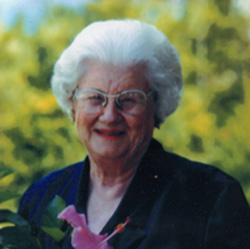 Mary Butera |
Mary Butera was born in Poughkeepsie, New York, in 1918. Her father's successful sweet potato canning business brought the family to Alabama before her father sold the business to take up real estate. Her father bought large tracts of land in South Florida and the Panhandle, including parts of Wakulla County and St. George Island. Mary arrived in Sopchoppy, Florida with her family in 1923.
Listen to Mary Butera's description of her mother's involvement in local schools: Real Network | Windows Media Player
Mary Butera's father was invested in two land purchasing companies—R.D. Crawford and Wakulla Industrial Company. These companies were instrumental in paving the original Sopchoppy Highway with shells harvested from Shell Hammock in Franklin County.
Listen to Mary Butera's description of her family's role in building US Highway 319: Real Network Windows Media Player
Indian skeletons were often unearthed during the construction of the highway and Mary recalls arriving home from school to find crates of bones stacked up around the house. According to Mrs. Butera, some of the skeletons and remains were cataloged and stored at the Smithsonian in Washington D.C.
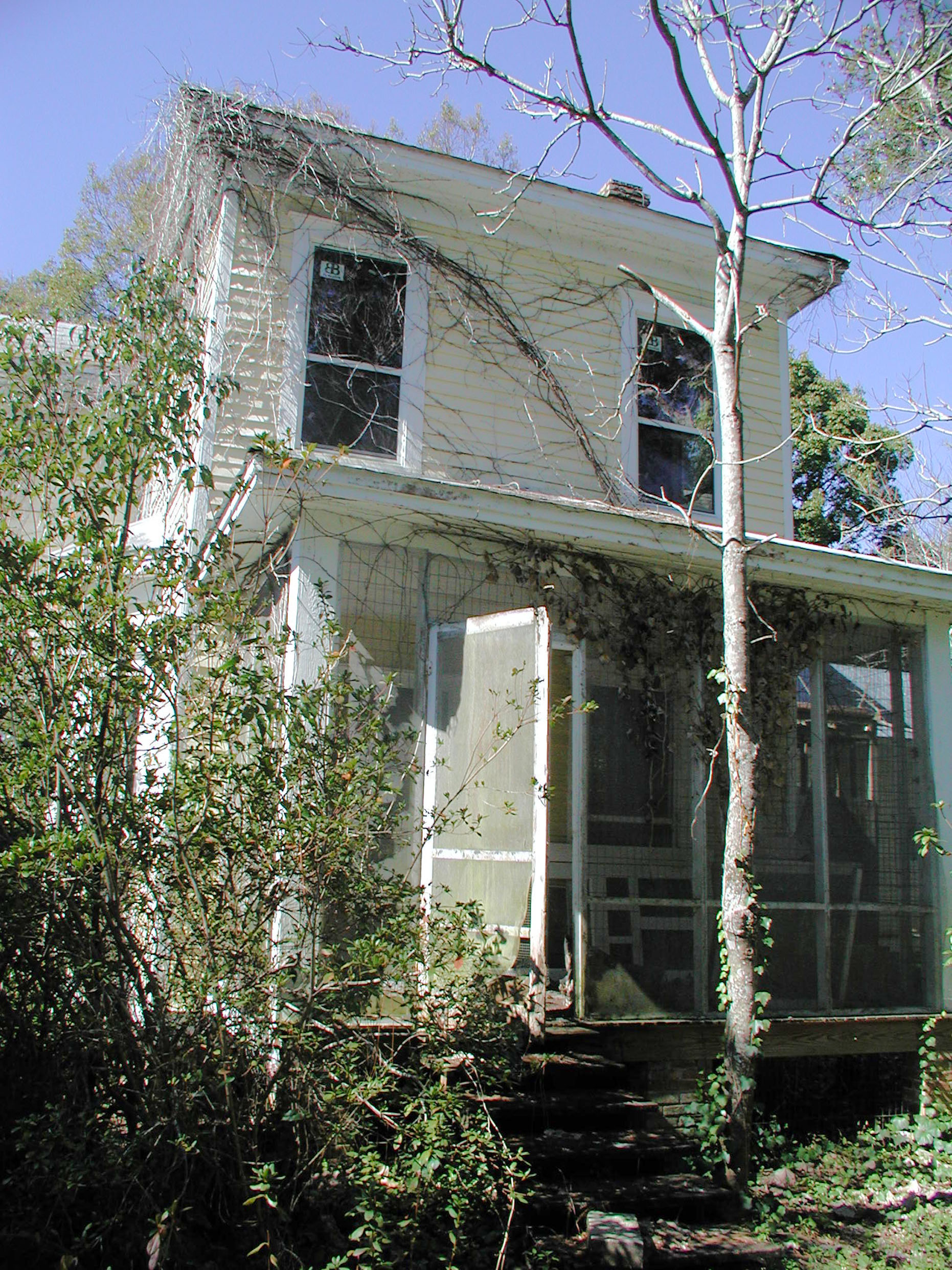 Porch of childhood home where bones were stacked |
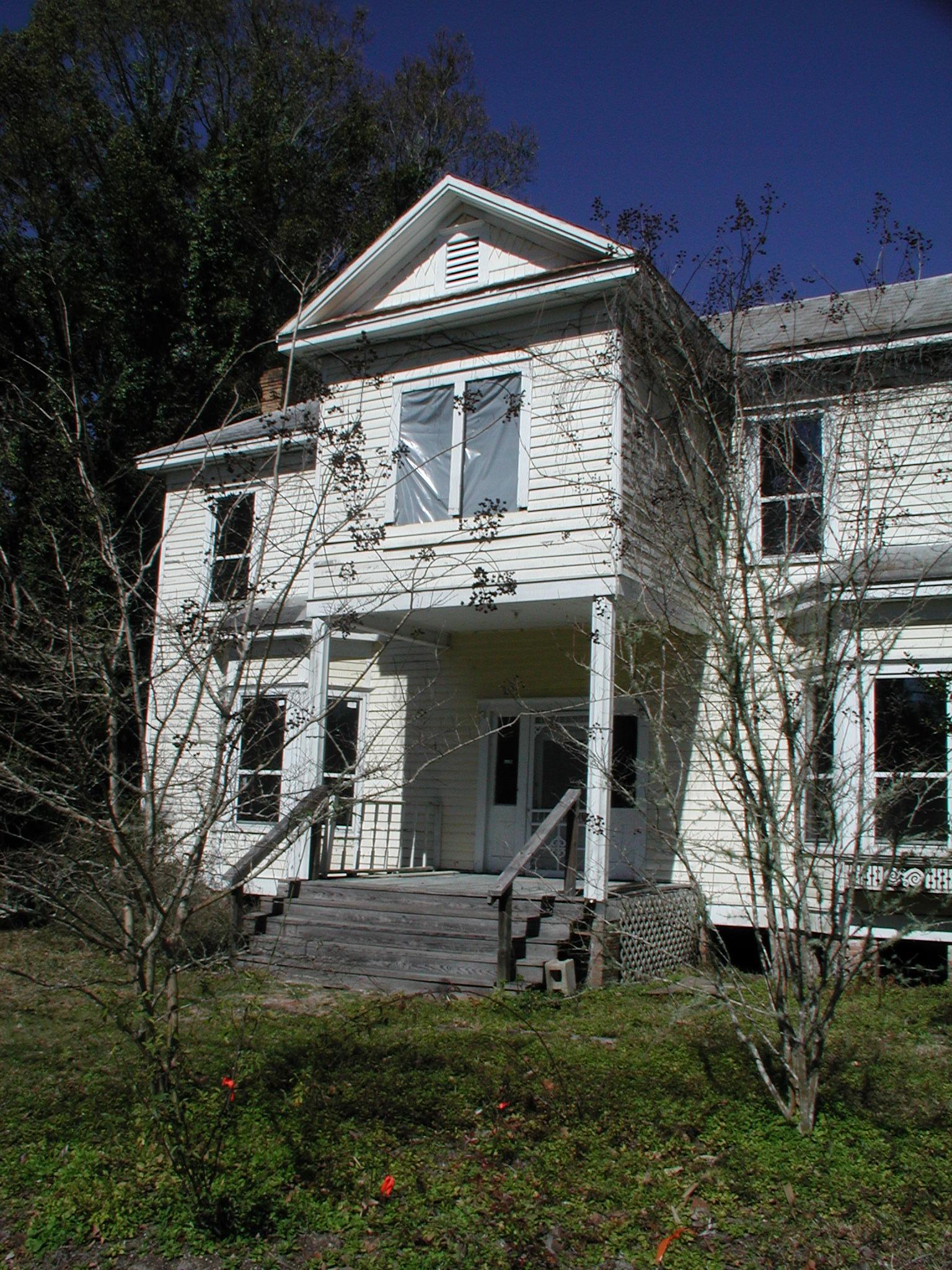 Mary Butera's childhood home, under renovation as of spring 2005 |
Listen to Mary Butera's recollection of the skeletons: Real Network | Windows Media Player
Other early childhood memories include a back porch chest that held a 300-pound block of ice, the good smells from local turpentine stills, and learning to swim in the Sopchoppy River. Mary's also recalls her father and brother hauling logs out of a nearby creek.
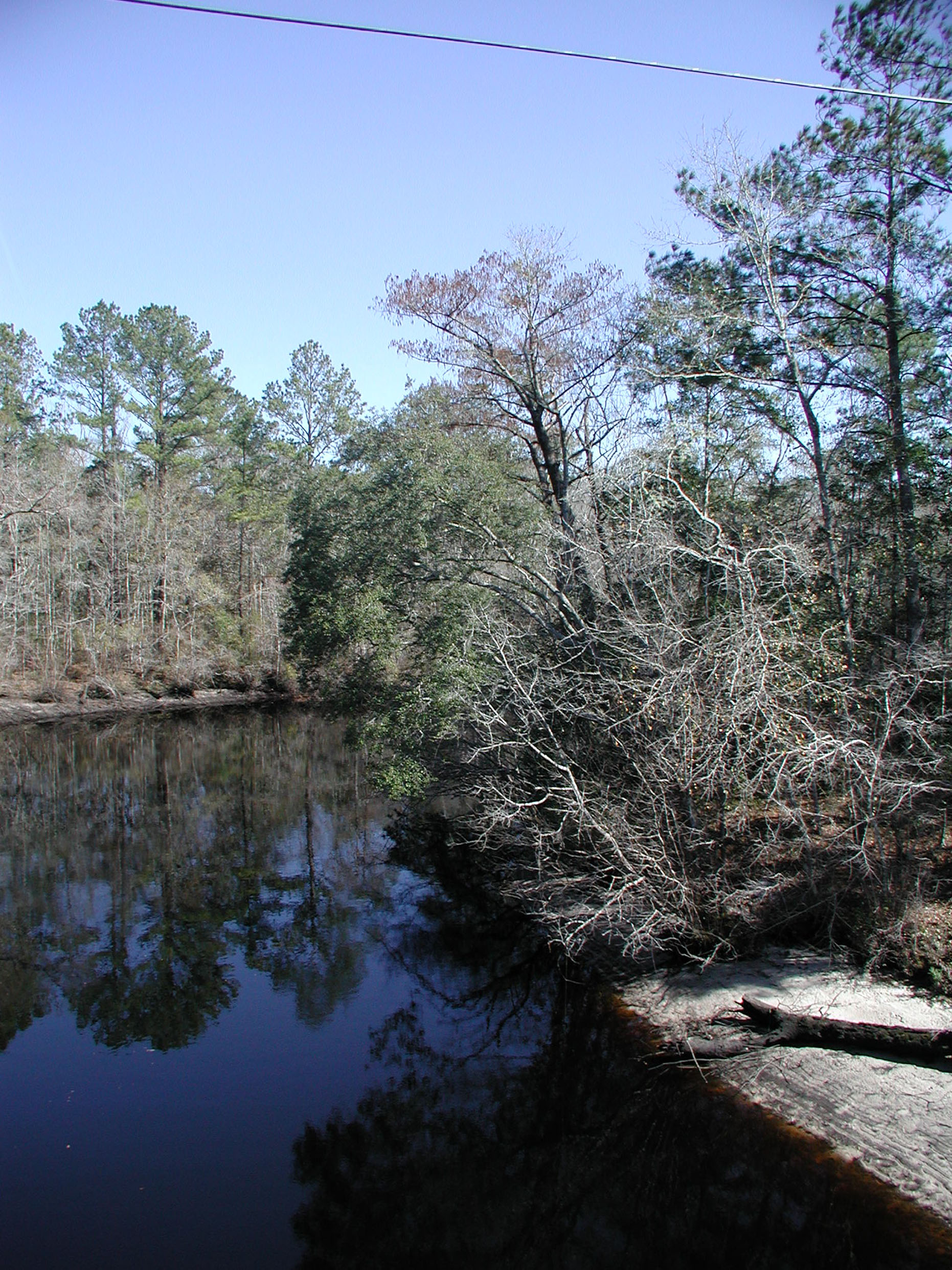 Sopchoppy River where Mary Butera often swam |
Listen to Mary Butera's recollection of the hauling out the logs: Real Network | Windows Media Player
The stock market crash eventually took its toll on the family, and her father lost most of his land. Mary Butera purchased her own land when she was only 19 years old and eventually acquired five acres, paying only one dollar per year in property taxes. She still resides on the property she bought in 1937.
Mary worked as a clerk for the Wakulla County Board of Education for eight years after high school. While she was working for the school system, a recruiter inquired if she was willing to head the local U.S.O. during World War II. Mary accepted the position and was soon organizing numerous dances, social functions, and policies for the army. She also found living arrangements for the young army wives whose husbands were stationed at Camp Gordon Johnston.
Listen to Mary Butera describe her USO efforts during World War II: Real Network | Windows Media Player
The construction of the new army camp displaced some of the existing homes of Harbinson City. Mary arranged to have one of the homes slowly taken apart and reconstructed on her land in Sopchoppy as a residence for her parents. The Harbinson City homes contained high quality wood from the local sawmill, and Mary Butera wanted to preserve the materials. She paid the supervisor 50 cents an hour and his assistants received 25 cents per hour to move the house.
Listen to Mary's describe the effects of the war on her parents: Real Network | Windows Media Player
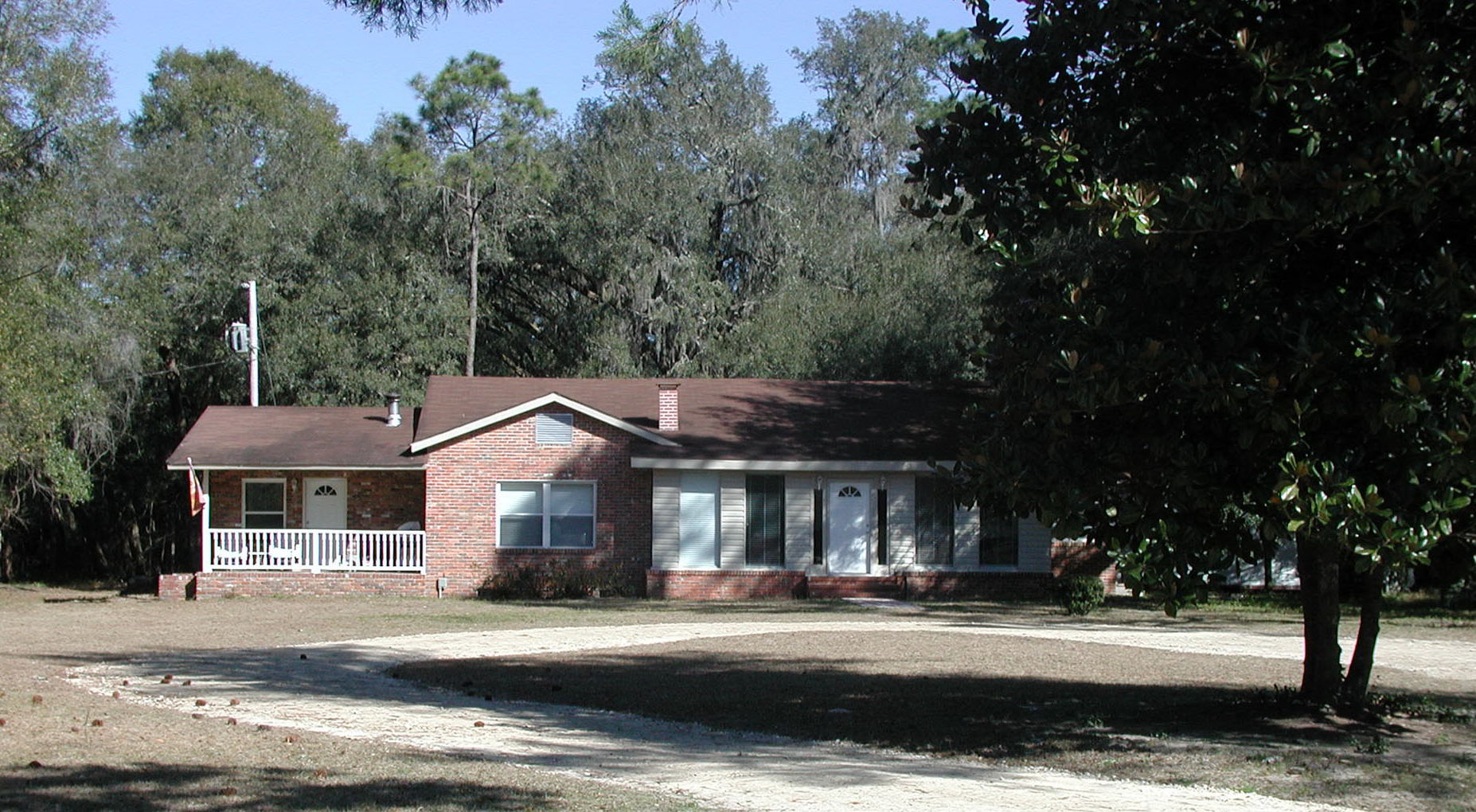 Photo of house moved from Camp Gordon Johnston |
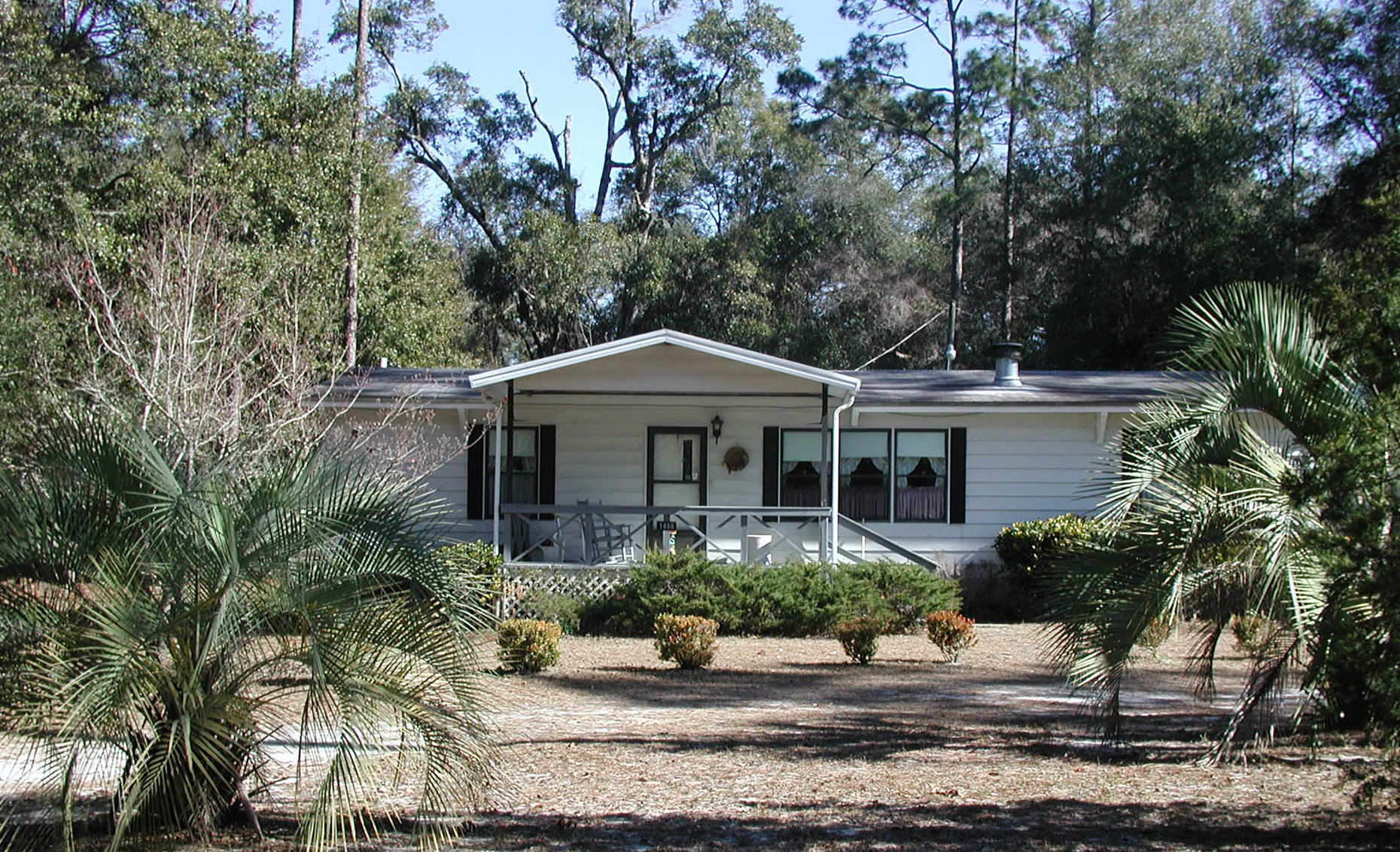 Mary Butera's current residence |
She met her husband Charlie while working with the U.S.O. and they moved to New York after the war in 1946. Her Wakulla County land was planted with pine trees during her 38-year absence from Wakulla County. She returned with her husband to Sopchoppy in 1984. She lost her husband about a year and a half after moving back to Sopchoppy, but believes “He took his last energy to get me down here where he knew I would be happier, out of that cold awful weather.”
profile by Rebecca L. Roberts
Note: The content of the website has not been updated since 2005. The site remains online for it's value as legacy content and is unlikely to be updated.